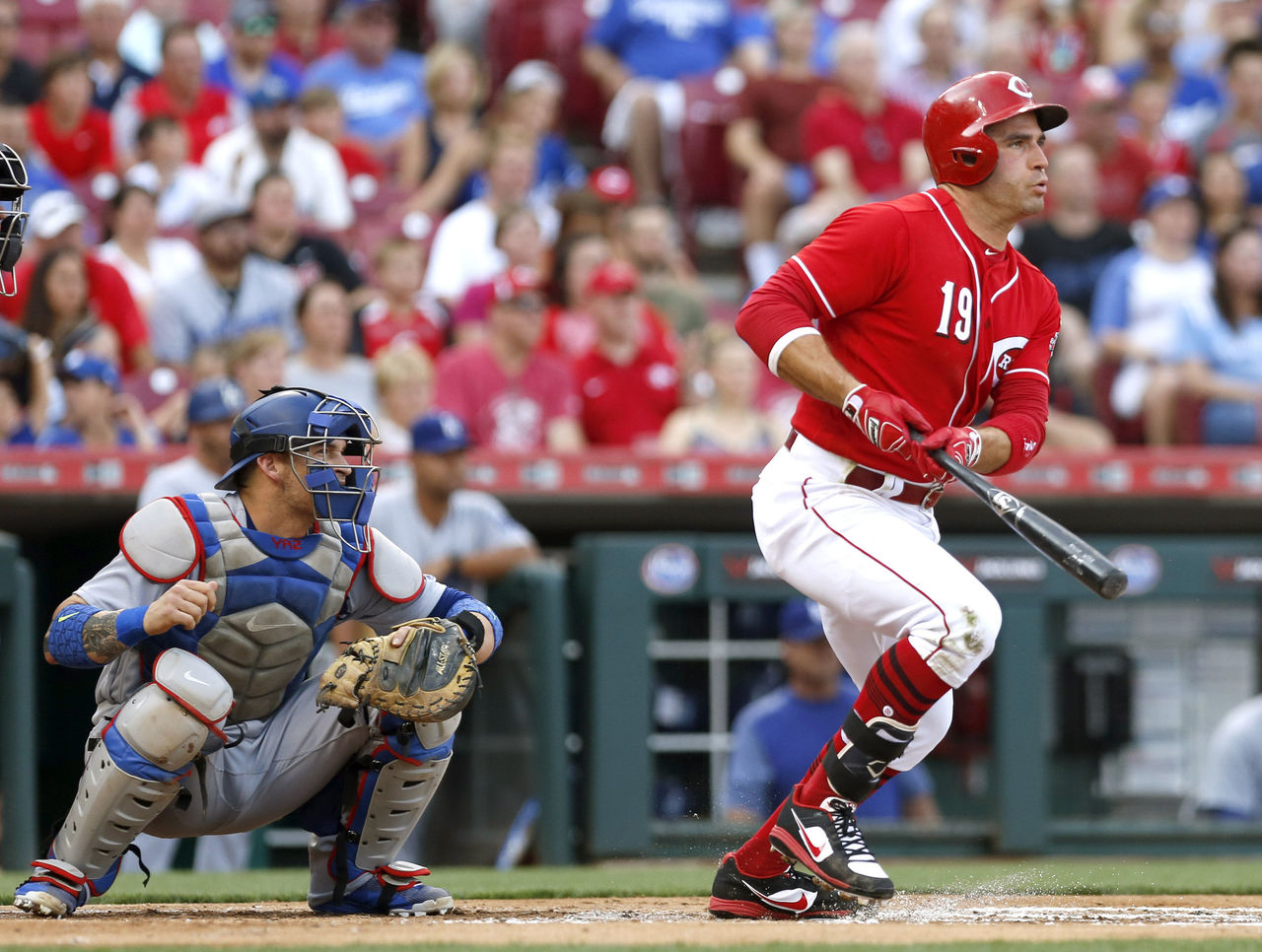Joey Votto talks strike-zone management - and praises umpires
NEW YORK – As the Cincinnati Reds play out the string in their fourth straight losing season and almost assuredly their third straight landing in the National League Central basement, there still is great importance every time they take the field.
Joey Votto, the 2010 National League MVP, is on his way to leading the Senior Circuit in on-base percentage for the sixth time in his career, walks for the fifth time, and OPS+ for the second time. As the Canadian first baseman continues to burnish his Hall of Fame resume, the most incredible thing is that even after celebrating his 34th birthday Sunday, Votto may have better days and years ahead.
The reason to believe Votto can get even better is that his mastery of the strike zone, always his calling card, continues to improve. According to FanGraphs data, Votto has swung at 15.9 percent of pitches outside the strike zone this season, the lowest rate of his career and the lowest in the major leagues this season.
Meanwhile, Votto has swung at 71.3 percent of pitches in the strike zone, a 55.4-point spread that is the highest in baseball since Chipper Jones registered a 57.3-point gap in 2009 - at the age of 37. Meanwhile, Votto's overall swing-and-miss rate (5.6 percent) is the lowest it's ever been, which is remarkable for someone with 34 home runs on the year.
"As you get older, you lose some strength and athleticism," Votto said. "The game slows down for you a little bit and experience takes over, and you start figuring out what brings about success over the long term."
Votto believes he can continue to lower his rate of swings out of the zone, saying, "Easily, I could be single digits." Given a perfect strike zone, Votto estimates that his optimal out-of-zone swing rate would be somewhere between 5 and 10 percent, because there are some pitches worth swinging at out of the zone.
The non-strikes that Votto wants to swing at are generally high or low, while swings at balls off the edges of the plate are the ones he wants to avoid. That means there is something else working in Votto's favor: Even though the strike zone remains the domain of human umpires, the men in blue are evaluated based on the same software that helps measure those in-zone and out-of-zone swings, and the strike zone continues to evolve as a result.

(Photo courtesy: Action Images)
"You see it changing," Votto said. "You see the left-handed strike zone, the left-handed outside pitch moves closer to the plate - less balls are called away. The left-handed strike is moving closer to the strike zone. Pitches that are up and in, pitches that are in, are being called strikes. I can manage that.
"When I was first called up, there's no - I don't think there's any debate that the pitch that was outside was called a strike more often, and sinkerball guys, guys with running fastballs, guys that would be able to hit the spot outside, even though it was off the plate, were given a strike. I can only do so much with that, right?
"Now, as things change … the umpires are working hard, they're getting better. Everyone's getting better in this sport and the umpires are no exception. They're evaluated constantly, and they take those evaluations seriously. They care about being part of a really nice, clean product, and all their feedback comes from PitchFX and StatCast."
Votto's advantage is his own internal software, honed and improved over years. As the real strike zone continues to edge closer to what he processes when he's standing in the box, that only serves to further the edge that Votto has developed through years of experience. It's why he's able to joke that, if the strike zone were turned over to robots, he'd be the best at it.
"I've been doing this since I was a little boy, since I was a teenager, since I was a minor leaguer," Votto said. "This is a conversation that would have to be had with someone who's 15 or 12 or 18, starting their professional career. Oftentimes, I have conversations with guys and they're like, 'How do you do this?' or 'How do you do that?'
"It would be like me going up to Giancarlo or Aaron Judge, and saying, 'Hey, I want to hit the ball as far as you can, how can I do that?' Just because it’s something that's process-oriented or process-related doesn't mean you can flip the switch - doesn't mean it's something that can just come out of thin air, that it's a decision you make, and all of a sudden, there you go, you've got it. It's something that needs to be a skill developed from a very young age."
HEADLINES
- Yankees' Schmidt: 'Sign the dotted line with however much' Soto wants
- Astros' Verlander allows 2 runs over 6 innings in season debut
- Rockies' Freeland out 4-6 weeks with elbow injury, says pitch clock could be factor
- Phils' Turnbull flirts with no-no, Bohm hits 2 HRs in win over White Sox
- Strider says bone fragment led to season-ending elbow surgery